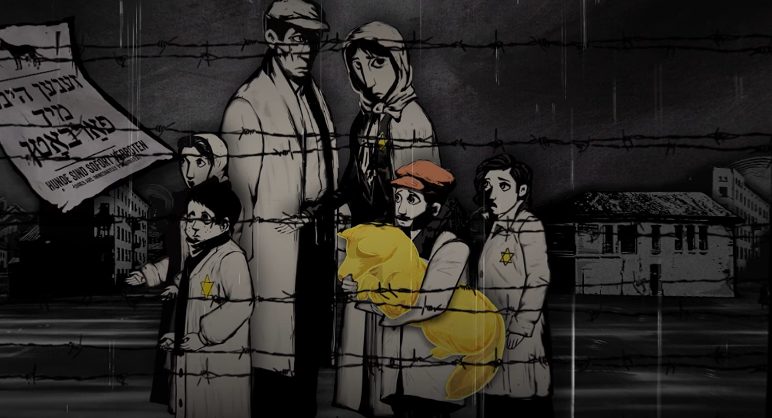Academic journal: VR film 'Lala' an effective teaching tool for kids

A newly published article in the peer-reviewed journal Social Education focuses on the potential of virtual reality in the classroom, using USC Shoah Foundation’s virtual reality film Lala as a case study.
“Excursion into Empathy: Exploring Prejudice with Virtual Reality” was co-written by the Institute’s Program Manager of Development Amy Carnes, Director of Education Claudia Wiedeman and faculty of the University of South Florida’s education department. It encourages educators to consider this new medium as an effective conduit for fostering students’ emotional connections with classroom materials.
It rests partially on young students’ responses to a viewing of Lala, a film based on the experience of Holocaust survivor Roman Kent, who shares the story of his time in Nazi-occupied Poland alongside his beloved dog Lala. The film asks students in an age-appropriate and sensitive way to consider the topics of prejudice and fairness, allowing them both to walk in Kent’s shoes in an animated historical world, and to see him speak in his apartment in present-day New York City.
With help from first authors Ilene Berson and Michael Berson from the University of South Florida, the Institute was able to test Lala’s ability to move young students, after years of requests from primary school educators for more directed programming.
“I was frankly a little bit dubious because I have a first grader and I know what they’re like,” Amy Carnes said of the evaluation process at a Florida elementary school. “How were we going to get them to pay attention, keep their headsets on and not squirm around?”
The two-day effort in November began with a clip of testimony sourced from the Institute’s Visual History Archive. In the clip, survivor Eva Freedman speaks of her childhood of shame and hiding. One day, while she was playing at a park, the other children asked her why her eyes were so dark. She told them she had just forgotten to wash them, and then went home to wash her eyes with soap.
“Her mother found her and asked her what she was doing, washing out her beautiful dark eyes,” Carnes said. “The lesson surrounding the clip was on what’s fair and not fair – a theme that children can definitely identify with. First graders are the fairness police.”
The next day, the first graders watched Lala to explore prejudice and systematic injustice in an age-appropriate way, as children and young adults can easily relate to the loss of a cherished pet.
“The children were very verbal about feeling the rain that was happening in their headsets, reaching around trying to touch things,” Carnes said. “But cuteness aside, they were commenting on the content of what they were seeing.”
When in Lala the Nazi soldiers come to take the dog away, the film does not make explicit that Lala dies.
“But almost all of the kids were saying it wasn’t fair that Lala died,” Carnes said. “They were really following the story and understanding the implications of what was happening. When afterward they had to make connections between Eva’s testimony and Lala, they really understood.”
The article underscores the capacity of virtual reality to put forth an emotionally charged subject in a way that fosters connections to children’s lives and prompts discussion on how to translate compassion for Lala into prosocial behavior in the real world.
“It was really about seeing how testimony-based educational materials can work in a primary education classroom after we’d formed an advisory committee to start thinking about how to develop these materials for a younger audience, since IWitness was created for a secondary school audience,” Carnes said. “The virtual reality part of that made Lala a great case study for the article. There’s really powerful resources available to teachers using virtual reality.”
Like this article? Get our e-newsletter.
Be the first to learn about new articles and personal stories like the one you've just read.